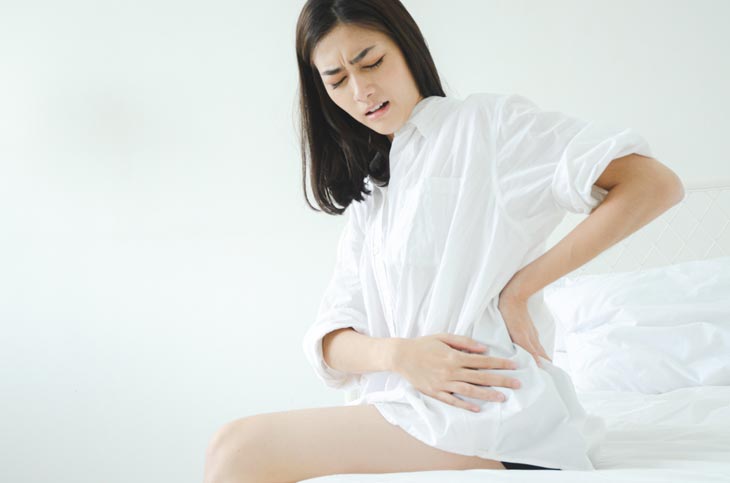If you seek effective ways to treat symptoms after pregnancy C-section, this article is entirely fit for you. You will learn about types of hip pain after pregnancy C-Section and how to ease it safely and soundly.
Getting healthy after pregnancy is as important as during the carrying time. To get to know more about upward tips and information, keep reading!
C-Section Overview

Definition
C-Section stands for “Cesarean delivery,” a pregnancy surgery process that delivers a baby over the abdomen by incision method.
You must prepare for Cesarean surgery beforehand if you have had experience with Cesarean surgery previously or not considering natural childbirth for your baby for the very first time.
If you intend to process a Cesarean surgery, you must get it well-planned for the safest outcome.
Prepare yourself with full information about its procedure, and the aftercare process will give you a huge help.
Which Is The Reason For Using C-Section?
You can choose Cesarean surgery if you prefer this plan better than vaginal delivery.
Otherwise, your medical advisor could recommend you this method as its better for childbirth or following reasons:
- Your baby is in a displaced position: A Cesarean surgery is optimal for a baby delivering in abnormal situations such as their feet and their head switching position (transverse). Or the baby’s feet or bottom comes out before labor contractions happen (breech) in the latest pregnancy week.
- Late or missing laboring: Laboring postponing in the post-pregnancy week is one of the most popular causes of Cesarean surgery selection. This phenomenon happens when your cervix doesn’t expand enough despite contractions for several hours.
- Having a previous C-Section: Your healthcare advisor could recommend a Cesarean surgery if you had C-Section and then become pregnant again. You can also attempt vaginal birth after cesarean (VBAC) in some cases.
What Are The Types Of Hip Pain After Pregnancy C-Section?
The culprit of the agony is the abdominal adhesions after delivery. Thus, the C-section scar is to blame when it comes to hip pain or even pelvic or lower back pain.
Let’s dig into the details by scrolling down!
Does Hip Pain Appear After Pregnancy C Section?
Along with foot pain after pregnancy, hip pain is also a common manifestation of postoperative sequelae.
This pain after delivery greatly hinders a woman’s return to normal after giving birth. It is similar to pain during pregnancy but has different causes.
The root of this syndrome is usually compression of nerves during Cesarean surgery, muscle and ligaments aches due to movement after birth.
Another reason is that intravenous fluid is not fully drained after the Cesarean process.
In addition, the process of new skin formation also causes core muscle tension and contraction of the hip muscles and ligaments.
These issues, thereby, cause difficulties in movement and pain in the hip, pelvic floor muscles, abdominal muscles, spine, etc.
Symptoms can vary from woman to woman. More severe syndromes are often inflammation because of bacterial invasion and incision. The stiffness because the regenerative tissues and scar tissue overlap is also a sign.
Types Of Hip Pain After C-Section Delivery
Hip Groin Pain After C-Section
The usual cause of pain after delivery is usually nerve damage.
With pain after the Cesarean procedure, the incisions can accidentally deviate from the nerves in the groin or pelvis, causing severe pain and difficulty in functioning.
Another possible drive is when the healing process of muscle tissue and skin fails.
This state puts pressure on the abdomen and hip wall, causing muscle tension and groin pain in the first week after the Cesarean process.
In the worst-case scenario, symptoms can progress to chronic arthritis, generated when the immune system attacks healthy joint connective tissue after recovery.
Hip Flexor Pain After C-Section
Postpartum scars greatly affect the health and mobility of women. C-section scars are often the main cause of hip and pelvic girdle pain but are often overlooked.
Scar tissue can adhere to the sacrum and cause bladder muscle strain, which puts pressure on the bladder, pelvis, and uterus.
Those that are not properly treated can spread and attach to the hip flexors, leading to chronic pain tightening with back and hip flexor pain.
The above symptoms may be due to complications after abdominal surgeries. But they may also be scars responsible that have not been properly postoperative.
Mothers should go to the medical examination facility as soon as possible for guidance.
Burning Hip Pain After C-Section
Burning hip pain after Cesarean surgery is a rather severe symptom and greatly affects women’s daily activities.
The cause of this symptom is usually muscle tension, nerve compression, and arthritis.
In most cases, nerve compression is the main root of severe pain after Cesarean surgery.
Depending on where the C-section scar is attached after an operation, portions of the scar may extend to the hip bone, thigh bone, and pinch nerves there.
Long-term progression of this disease can cause joint degeneration and local nerve paralysis. These are all long condition phenomena and have profound effects on daily activities and quality of life.
Side Hip Pain After C-Section
Similar to the cases of hip pain mentioned above, this case is still mainly due to nerve compression.
In the case of severe pain on the single side, the scar location is complicated and compresses the nerve on one side.
Such a situation yields pelvic bones, pelvic muscles, or joint pain on the left or right side after the Cesarean surgery.
Muscle strain from an adherent scar to the sacrum and stiffening of the pelvis is also a common cause of unilateral hip pain or pelvic pain.
The pressure the scar tissue causes to the pelvis and spine can compress the nerves and lead to rubbing of the spine, then affect sleeping and movement positions.
How To Relieve Hip Pain After C-Section Delivery?
Alleviating Hip Pain 3 Months Postpartum
Usually, pain caused by nerve compression or muscle tension due to scar tissue complications after Cesarean surgery or postpartum will disappear after a few weeks to a few months.
After 2-3 months, ease the pain by physical therapy or gentle exercises at home or in specialized medical facilities.
The massage and chiropractic methods also bring quite significant effects for all kinds of bone and hip joints sequelae.
Eating plans are also an important factor in reducing hip pain.
Adding more fruits and vegetables and vitamins, cutting down on stimulants like coffee and alcohol, and keeping a healthy weight are keys to promoting body mechanics for recovery.
Mothers can also consult a healthcare provider for a personal optimal recovery plan. We suggest that you should practice some back-strengthening workouts during pregnancy to minimize the pain in postpartum.
Alleviating Hip Pain 6 Months Postpartum
More severe symptoms may take six months to 1-2 years for the body’s hormone levels to rearrange and rebalance.
The combination with home remedies is equally crucial in this healing process.
Postpartum body plus the recovery process after performing Cesarean surgery will cause exhaustion.
Therefore, there should be a reasonable rest and exercise regime. This regime needs to be monitored, so you should update it for the healthcare provider.
Because the healing process will take a long time, appropriate rest conditions such as comfortable beds and pillows are also compulsory.
Using your finger to massage around the affected area also alleviate your pain.
Some sequelae may appear for other reasons, so seek medical help when there are signs of more severe pelvic joint pain, stiffness, or chronic pain after a Cesarean procedure.
Conclusion

Reading this line, you should have known more about hip pain after pregnancy C-Section and its alleviation methods.
There is no way to optimize and shorten joint pain postpartum, so women should take it with great care after delivery.
Indeed, reinforcing a strong body is a great way to ease the pain and relieve the stress of hip, joint, pelvic, and knee pain.
Consult well with your doctor or medical professional before Cesarean surgery and get aftereffects resolvent to get the healthiest body after laboring and keep enjoying daily life.
